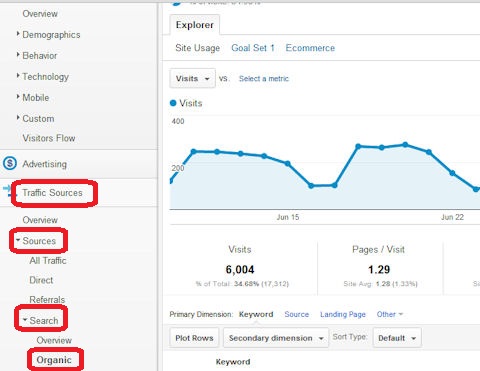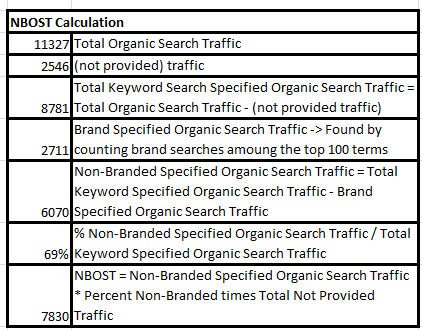Getting Dev Team Mindshare For Your SEO Projects
Getting in the development schedule in an enterprise environment can be one of the most challenging parts of the job for an SEO professional. The dev team has so many different people coming at them with projects to do, and prioritizing those projects can be a mess. Add to that the frustrating reality that the […]
Getting in the development schedule in an enterprise environment can be one of the most challenging parts of the job for an SEO professional. The dev team has so many different people coming at them with projects to do, and prioritizing those projects can be a mess.
Add to that the frustrating reality that the person/people setting the priorities often do not have nearly enough information to decide which projects could have the biggest impact for the organization.
This can leave you in stunned shock at a conference room table when that killer project you were pushing for did not make the cut in the development schedule for the next 6 months.
A few key steps can help you minimize the risk of this happening to you. Of course, there is the usual tactics of making friends with key people in the decision making process, and buying the developers pizza and beer. Those are excellent ideas, and you should do them, but let’s dig a little deeper into the process.
Determine Your Non Branded Organic Search Traffic
Being definitive about the potential economic gains is always impossible to do precisely in SEO, but that does not relieve you of the responsibility of doing the best you can. The first step is to get a handle on the current level of non-branded organic search engine traffic (“NBOST”) that your site gets.
The reason we focus on NBOST is that your site should not need any help from your SEO efforts to rank for your company brand name. Google and Bing are very good at ranking your for your brand even with no real SEO efforts, while your SEO is best measured using NBOST. Obtaining an accurate NBOST total is a little tricky in the era of “not provided”, but it is still doable.
Follow these steps and it will get you there:
- Determine your total organic search traffic (“Total Organic Search Traffic”) in your analytics tool. In Google Analytics the steps are: Traffic Sources -> Sources -> Search -> Organic
- Look at the incoming search phrases and see how much of your Total Organic Search Traffic for which the keyword reported is “not provided” (“Total Not Provided Traffic”).
- Calculate the traffic for which you have keyword data by subtracting Total Not Provided Traffic from Total Organic Search Traffic. We will call this “Total Keyword Specified Organic Search Traffic”.
- Find out what portion of Total Keyword Specified Organic Search Traffic comes from brand terms (“Brand Specified Organic Search Traffic”) by reviewing the 100 most popular keywords and counting it up manually or by setting up a filter in your analytics tool.
- The Total Keyword Specified Organic Search Traffic which is non-branded (“Non-Branded Specified Organic Search Traffic”) = Total Keyword Specified Organic Search Traffic minus Brand Specified Organic Search Traffic.
- The % of your overall traffic that is non-branded (“Percent Non-Branded”) is just Non-Branded Specified Organic Search Traffic divided by Total Keyword Specified Organic Search Traffic
- NBOST = Non-Branded Specified Organic Search Traffic + Percent Non-Branded times Total Not Provided Traffic
This formula uses the percentage of non-branded traffic you do get (in the portion of your traffic where you can see the keywords) to estimate what percentage of your Total Not Provided Traffic is likely to be non-branded.
At Stone Temple Consulting, we did some validation of this methodology using several methods. In one example, we saw that the mix of landing pages for the not provided traffic seems to be very similar to the mix for pages for which we can get keyword data.
The above text based formulas may seem complex, but it is easier than it looks in print, as shown in this sample calcluation:
Estimate Growth Potential For Your Project
This is where some magic occurs. There is no accurate way to forecast SEO gains. And yet, this is a crucial step.
Let’s say you convince your team that NBOST will double based on a given project, and in the next step, you show them the fabulous wealth that will come in once that happens. So they do the project and 6 months later NBOST is up just 5%. You don’t want to be that person, because they will never listen to you again. Your credibility will be shot.
Of course, you need to put enough of a forecast on the table that it is motivating to them.
Note that if your prior forecasts of growth were all in range with, or underestimates of, how you set expectations, and they did the project based on those forecasts you job is much easier now – they will trust you are not just blowing smoke.
That said, how do you some up with a forecast?
Here are some tips on how to go about it:
- First determine what portion of the site is affected. If the project concerns one section of the site, and that section gets 35% of the NBOST, that means your project will have little to no impact on 65% of the NBOST. If you double that section’s traffic, you are increasing overall site NBOST by 35%. Breaking down the problem this way will help you better understand how to scale the possible impact.
- If you are adding new pages to the site, do the keyword research to determine the potential scale of traffic that could be added. Then scale that back by the time it will take to create the pages and for the search engines to rank that content. Also, do not assume position 1 placement, but assume something more conservative, like position 3 or 4 for less competitive keywords, and lower positions for hyper-competitive keywords. Use industry data to determing CTR by SERP position. You should also take into account the long tail, which I usually do by taking the traffic I see for the major head terms and multiplying by 10.
- If you are adding new content to existing pages, such as UGC or newly generated written content by staff writers, understand the schedule by which this will occur. UGC can take many months to have a real impact, and your staff writers need time to generate content too.
These are just a few examples, and there are way too many types of SEO projects for me to model each type. But, the key realization to start with is that you must do this.
If you can’t come up with a way to make reasonable guesstimates of the impact, you can’t expect long term success in selling your projects.
A final tip here is to provide a range. Hopefully your team will know that there is a large dose of guessing in SEO forecasting, so aim to give them a range of possible results.
Ideally, the low end of your forecast is high enough to still be interesting to do, and also covers your downside risk on the project potential. If it doesn’t, then the question is: why are you doing the project?
Of course, sometimes you have to do one project to enable others, so one specific project may offer little in terms of direct gains, but then it needs to be setting you up for future NBOST and conversion gains down the road.
Estimate Revenue Impact
This is a little bit easier to do, and just as important. Your website exists for a reason, and that presumably includes trying to get visitors to do something (a “conversion”).
It may be as simple as visiting a particular webpage, requesting to be contacted, downloading a white paper, completing a purchase, or any one of the above. Whatever it is, the action you are looking for them to complete has value to you as an organization. Otherwise, you would not have a website.
Make sure you understand what the potential conversions are, and the value for each. Some transactions may not have an obvious value, such as downloading a whitepaper, but if that is what a conversion is for you, work internally to agree on what the value is per download.
The other number you need to get your hands on is the conversion rate for your site. Ideally, you want this number specific to the conversion rate that results from NBOST.
If you can’t get this number because analytics is not setup to track it, the next development project you push for needs to be to get analytics setup to track it. You can’t improve what you don’t measure, and this is the basis on which you sell that particular project.
Once you have the conversion rate and conversion value in hand, coming up with an estimate of the revenue impact is easy. It’s just the projected growth in NBOST times the conversion rate times the average value per conversion.
Simple, Clear Presentation
The entire discussion so far has been about assembling the raw material for the real task … presenting this and selling it. Here is where your personal skills are key. As before, I am not going to focus on how to make people friends, or buy pizza, or the like, but the end goal. And the goal is to learn what motivates the stakeholders you need to sell.
This might be understanding how they are measured. Or it may be learning with they are passionate about that relates to their job. The better you can do in helping them see how this feeds into their own goals, the better.
Making this happen also requires that you keep it simple. Don’t offer up arcane explanations of things that will require work for people to understand. Part of this is speaking their language, and part of this is keeping it short, and to the point.
You may have 10 sets of details that you could spend time explaining to make sure everyone understands all the intricacies of what is involved, but my advice is that you skip them all and stay at the top level.
There is a direct relationship between the simplicity of your presentation plus your personal credibility, and your chances of success. Have the detailed information ready for when the questions come, but keep the initial presentation of the case for your project straighforward and simple.
In Summary
In an enterprise environment, your success often depends on getting your fair share of development time allocated to your projects. Invest the time required to be able to sell your projects effectively. If you choose your projects well, this will put you in a position to bring SEO success to your company.
Contributing authors are invited to create content for Search Engine Land and are chosen for their expertise and contribution to the search community. Our contributors work under the oversight of the editorial staff and contributions are checked for quality and relevance to our readers. The opinions they express are their own.
Related stories
New on Search Engine Land

